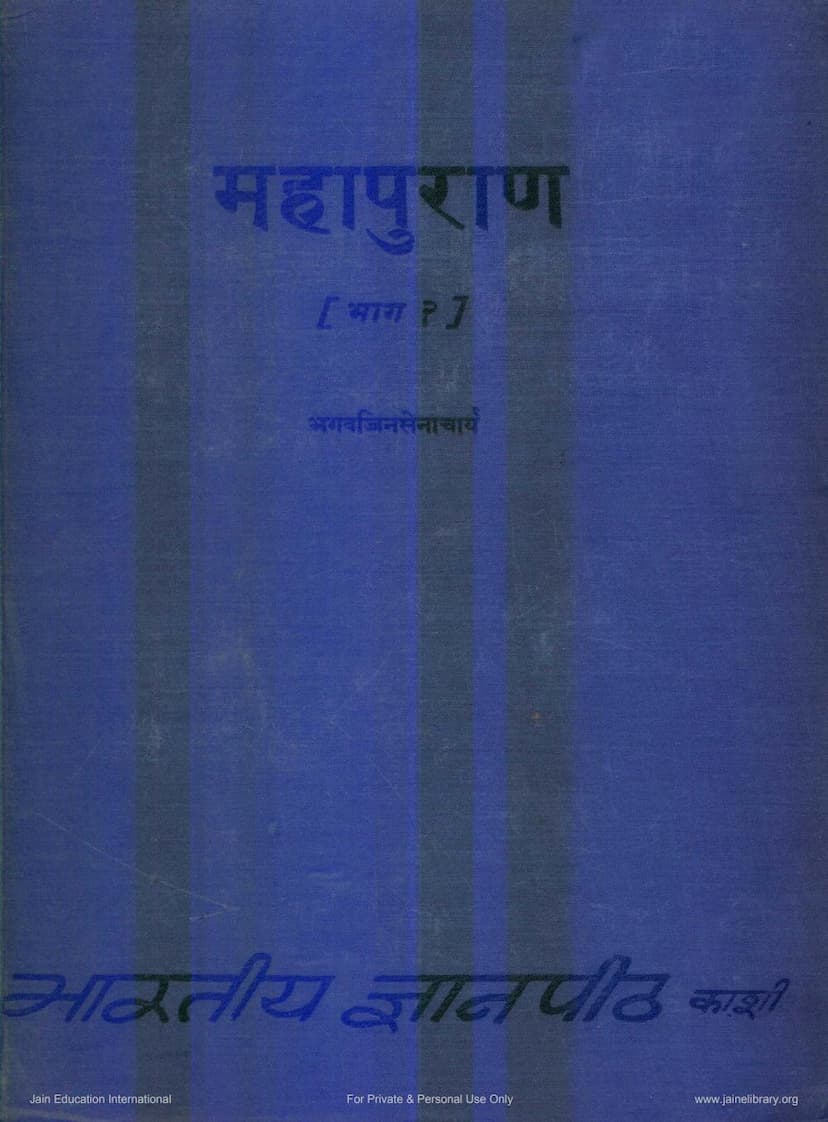Mahapurana Part 2 Adipurana Part 2
Added to library: September 2, 2025

Summary
The provided text is the Hindi translation of the Mahapurana (also known as Adipurana) Part 2, authored by Jinendracharya and edited by Pannalal Jain, published by Bharatiya Gyanpith. The text covers the life and teachings of the first Tirthankara, Lord Rishabhanatha, and the subsequent events related to his lineage, particularly focusing on the achievements of Chakravarti Bharat.
Here's a comprehensive summary based on the provided text, focusing on the events and themes presented:
Mahapurana Part 2 (Adipurana Part 2) - A Summary
This volume of the Mahapurana, compiled by Jinendracharya and edited by Pt. Pannalal Jain, is published by Bharatiya Jnanapitha under the Jnana-pitha Murti Devi Jain Granthamala. It serves as the second part of the first section (Adipurana) of the Mahapurana.
The core narrative of this volume details the extensive campaigns of Chakravarti Bharat, the eldest son of the first Tirthankara, Lord Rishabhanatha. The text vividly describes his conquest of the known world, following the path of the divine Chakra-ratna.
Key Events and Themes:
-
Chakravarti Bharat's Digvijaya (World Conquest): The text meticulously chronicles Bharat's military expeditions in all four directions:
- Eastward Journey: Bharat embarks on his digvijaya, conquering various kingdoms and subjugating kings. The narrative includes descriptions of the seasonal beauty of Sharad (Autumn), which symbolizes prosperity and victory, mirroring Bharat's own success.
- Southward Journey: He proceeds south, traversing diverse regions, describing various natural landscapes, rivers, and mountains. He conquers the southern ocean and its ruler.
- Westward Journey: Bharat then moves towards the west, encountering forests, mountains, and rivers, and subjugating kings. His journey takes him to the Vindhya mountain range, where he receives tributes from local rulers.
- Northward Journey: The text describes his onward march towards the north, reaching the Ganga river and its coastal areas. He conquers the ocean and a deity named Prabhasa, highlighting the power of his accumulated merit (punya).
- Conquest of North Bharat: Bharat enters North Bharat, overcoming resistance from kings like Chilata and Paravarta, and their allies. The description of the battle involves the use of divine weapons and celestial interventions.
- Confrontation with Bahubali: A significant portion of the narrative focuses on the epic conflict between Bharat and his younger brother, Bahubali. After a series of non-violent contests (netra-yuddha, jala-yuddha, mallayuddha), Bharat, in anger, releases the Chakra-ratna, which, however, does not harm Bahubali. Disgusted by the turn of events and Bharat's actions, Bahubali renounces the world and takes diksha.
-
Conventions and Symbolism: The descriptions are rich in poetic language and symbolism:
- Nature's Beauty: The text extensively describes the beauty of nature, particularly during the Sharad season, using it as a metaphor for Bharat's triumph and divine grace. Rivers, lakes, flowers, and seasons are depicted with great detail and personification.
- Divine Attributes: The Mahapurana emphasizes the divine powers and virtues of the Chakravarti, highlighting his righteousness, strength, and the merit that aids his conquests. The power of 'punya' (merit) is repeatedly emphasized as a driving force behind his success.
- The Chakra-ratna: The Chakra-ratna is depicted as a divine weapon that leads Bharat's army, symbolizing his divine mandate and unstoppable progress.
-
Social and Political Order: The text subtly touches upon aspects of governance and societal order, particularly Bharat's interactions with various rulers, his respect for the principles of dharma, and his eventual understanding of the impermanence of worldly power.
-
Spiritual Undertones: Despite the focus on military campaigns, the narrative is deeply rooted in Jain philosophy. The underlying theme is the ephemeral nature of worldly power and the ultimate quest for liberation. The events often lead to spiritual reflection, even for the mighty Chakravarti.
-
Detailed Table of Contents: The provided text includes a detailed table of contents (विषय अनुक्रमणिका) that outlines the specific events covered in each chapter (parva) of this volume, such as the description of the sea, the digvijaya, the praise of Ganga, the glory of merit, and the battles fought.
In essence, Mahapurana Part 2 (Adipurana Part 2) serves as a grand epic detailing the righteous and divinely ordained reign of Chakravarti Bharat, showcasing his conquests, his adherence to dharma, and the overarching Jain principles that govern existence, even for a universal emperor. The rich descriptions of nature and the symbolic representations enhance the spiritual and literary value of the text.